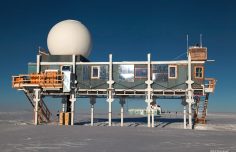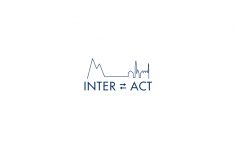Encompasses all the ways in which a body of ice (a glacierA glacier is a large, persistent body of land-based ice that forms over many years where the accumulation of snow is greater than its loss (ablation). The ice in a... More or ice sheetA mass of glacial land ice extending more than 50,000 square kilometers (20,000 square miles). The two ice sheets on Earth today cover most of Greenland and Antarctica and together... More) gains mass at its surface, such as snowfall and rime formation. However, it excludes ice gained from ice flow. The opposite of accumulationEncompasses all the ways in which a body of ice (a glacier or ice sheet) gains mass at its surface, such as snowfall and rime formation. However, it excludes ice... More is ablationEncompasses all the ways in which ice mass is lost from the surface of a glacier or ice sheet, such as melting at the surface or the base (underside), and evaporation. However, ablation... More. Rates of ablationEncompasses all the ways in which ice mass is lost from the surface of a glacier or ice sheet, such as melting at the surface or the base (underside), and evaporation. However, ablation... More and accumulationEncompasses all the ways in which a body of ice (a glacier or ice sheet) gains mass at its surface, such as snowfall and rime formation. However, it excludes ice... More affect the mass balanceThe difference between the amount of ice a glacier gains in winter and the amount lost in summer. A glacier which is gaining mass has a positive mass balance: more ice is... More of a glacierA glacier is a large, persistent body of land-based ice that forms over many years where the accumulation of snow is greater than its loss (ablation). The ice in a... More.
Related contents
-
> Summit Station
Field SitesSTATION NAME AND OWNER Summit Station is funded by the US National Science Foundation (NSF) and operated by Battelle ArcticDefinitions of the ArcticDefinitions of the Arctic vary according to environmental, geographical, political, cultural and scientific perspectives. Some scientists define the Arctic as areas having a high latitude, long winters, short, cool summers,... More vary according …
> Read more -
> New publication from INTERACT TA users
NewsINTERACT is proud to announce that a paper with the name “2000 years of variability in hydroclimate and carbon accumulationEncompasses all the ways in which …
> Read more -
> Mass balance
GlossaryThe difference between the amount of ice a glacier gains in winter and the amount lost in summer. A glacierA glacierA glacier is a large, persistent body of land-based ice that forms over many years where the accumulation of snow is greater than its loss (ablation). The ice in a... More is a large, persistent body of …
> Read more -
> Glacier
GlossaryA glacierA glacierA glacier is a large, persistent body of land-based ice that forms over many years where the accumulation of snow is greater than its loss (ablation). The ice in a... More is a large, persistent body of land-based ice that forms over many years where the accumulationEncompasses all the ways in which a body of ice (a glacier or ice sheet) gains mass at its surface, such as snowfall and rime formation. However, it excludes ice... More of snow is greater than its …
> Read more -
> Ablation
GlossaryEncompasses all the ways in which ice mass is lost from the surface of a glacier or ice sheetA mass of glacial land ice extending more than 50,000 …
> Read more



